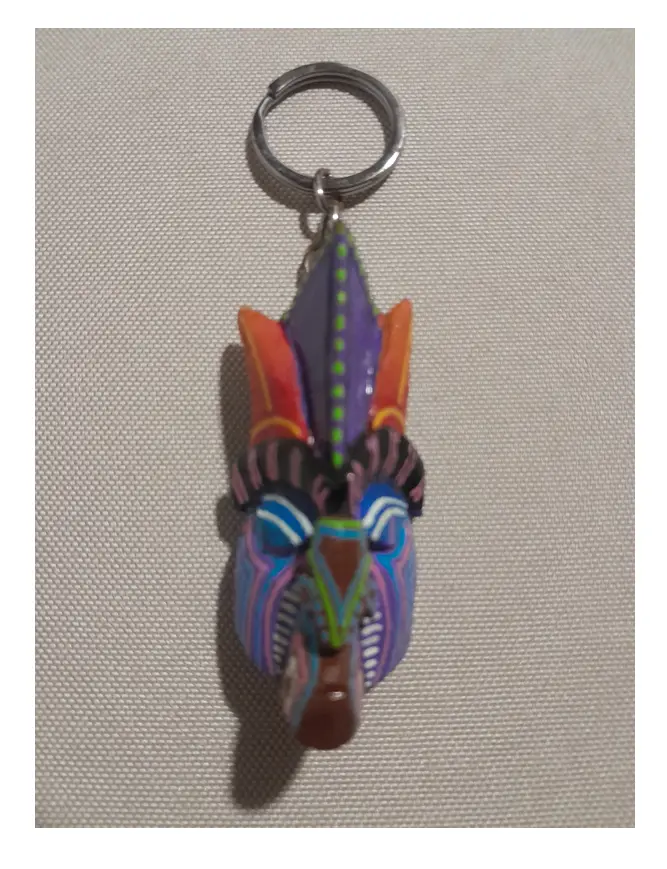Original Boruca Native Borucadevil Mask Keyholder - CR
The artists now begin to remove the negative background area, slowly creating a high relief three dimensional face. For the fine details, exacto-type knives are used to whittle away the unwanted wood. Cedar is very hard and difficult to carve; therefore the masks made from this type of wood are not quite as detailed. Conversely, balsa wood is very soft, and these are the masks where the artists can really achieve the many nuances of facial expression.
The history and traditions of Borucan masks began over 500 years ago, during the Spanish Conquest. 'Diablito' masks, or little devil masks were created and worn with the intent to scare the unwelcome invaders back to Spain. The conquistadors called the indigenous Borucans devils because they observed uncircumsized natives with faces of forbidding devilish images and other animal figures, therefore assumed that they worshipped the devil. The Borucan people feel a great sense of pride knowing that they were triumphant in keeping the Spanish from conquering their land and their spirit. Every year the annual 'Fiesta de los Diablitos' or 'festival of the devils', always December 30 to January 2, has traditionally occurred since the Spanish crusade of 1490-1500.
